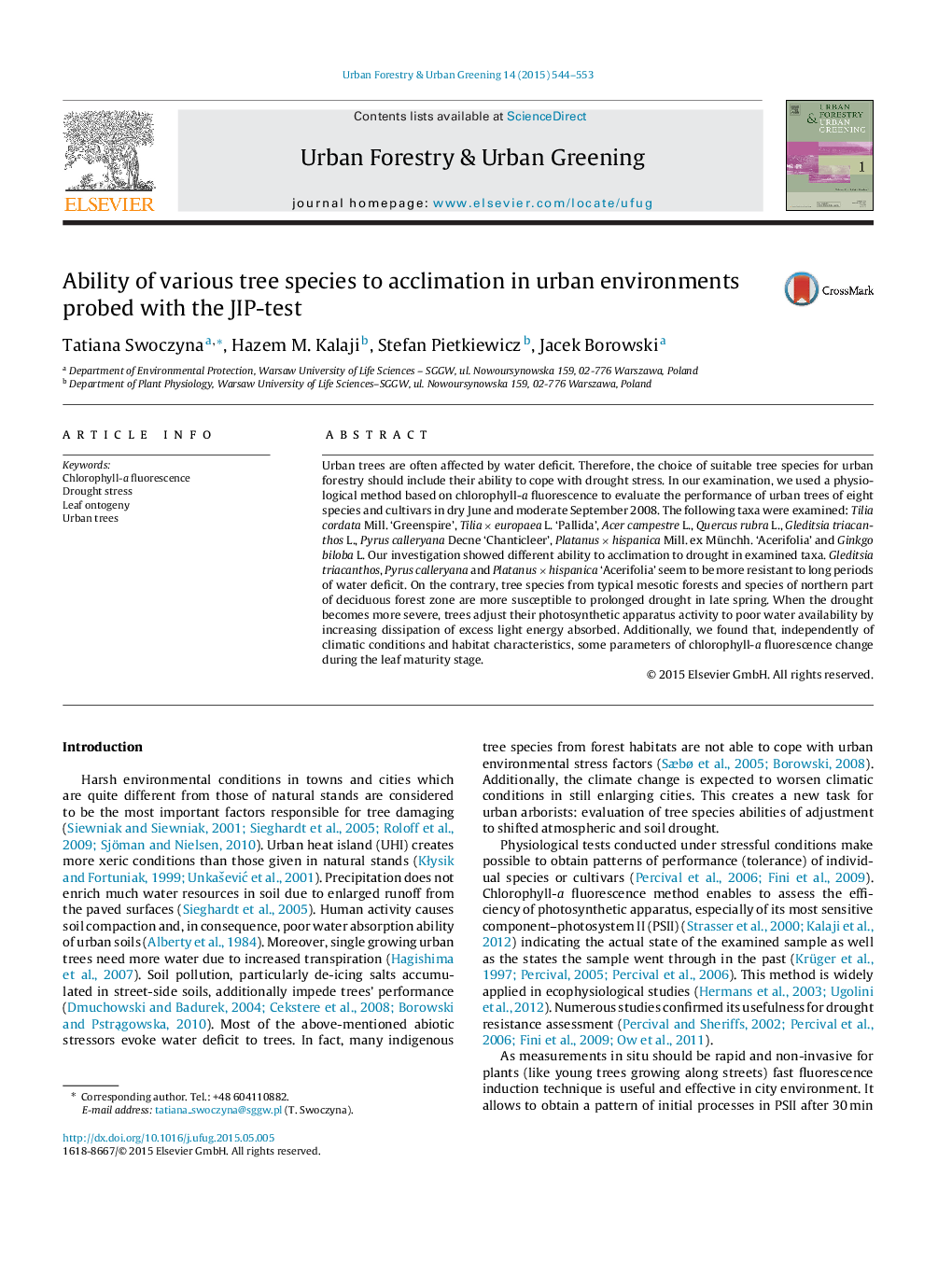| Article ID | Journal | Published Year | Pages | File Type |
|---|---|---|---|---|
| 10252205 | Urban Forestry & Urban Greening | 2015 | 10 Pages |
Abstract
Urban trees are often affected by water deficit. Therefore, the choice of suitable tree species for urban forestry should include their ability to cope with drought stress. In our examination, we used a physiological method based on chlorophyll-a fluorescence to evaluate the performance of urban trees of eight species and cultivars in dry June and moderate September 2008. The following taxa were examined: Tilia cordata Mill. 'Greenspire', Tilia Ã europaea L. 'Pallida', Acer campestre L., Quercus rubra L., Gleditsia triacanthos L., Pyrus calleryana Decne 'Chanticleer', Platanus Ã hispanica Mill. ex Münchh. 'Acerifolia' and Ginkgo biloba L. Our investigation showed different ability to acclimation to drought in examined taxa. Gleditsia triacanthos, Pyrus calleryana and Platanus Ã hispanica 'Acerifolia' seem to be more resistant to long periods of water deficit. On the contrary, tree species from typical mesotic forests and species of northern part of deciduous forest zone are more susceptible to prolonged drought in late spring. When the drought becomes more severe, trees adjust their photosynthetic apparatus activity to poor water availability by increasing dissipation of excess light energy absorbed. Additionally, we found that, independently of climatic conditions and habitat characteristics, some parameters of chlorophyll-a fluorescence change during the leaf maturity stage.
Related Topics
Life Sciences
Agricultural and Biological Sciences
Forestry
Authors
Tatiana Swoczyna, Hazem M. Kalaji, Stefan Pietkiewicz, Jacek Borowski,
